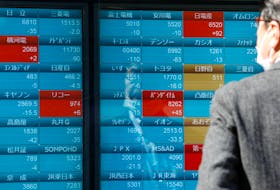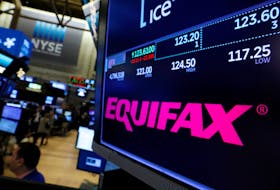By Tom Arnold
LONDON (Reuters) - Argentina's shuddering financial crunch has stirred memories of ripple effects across all emerging markets from prior meltdowns in 2001 and 2014. But the country's woes appeared more ringfenced this time around.
Investors are trying to gauge the fallout on their portfolios from possible payment delays on around $100 billion of debt, capital controls and an uncertain political backdrop ahead of October's presidential elections. Still, contagion is expected to be more limited this time round.
Here are three charts showing Argentina's changing status in global financial markets:
1/LOST WEIGHT
Argentina was an emerging market powerhouse in the run-up to its $93 billion default in 2001. But that's changed since.
Back then, Argentina had a weighting of close to 12% in the JPMorgan Emerging Markets Bond Index Global Diversified - the sector's fixed income benchmark - and accounted for 1.1% of the equity MSCI Emerging Markets Index <.MSCIEF>.
But now, its bond benchmark weighting has dwindled to 1.1% while its equity index weighting has shrivelled to 0.18% - little more than a rounding error for many managers.
(Graphic: Weight of Argentina in MSCI Emerging Markets Index, https://fingfx.thomsonreuters.com/gfx/editorcharts/ARGENTINA-ECONOMY/0H001QEVF891/eikon.png)
While capital controls rarely sit well with index providers, Argentina may still have some breathing space.
Having lifted Argentina to emerging markets status only in June 2018, MSCI said it was monitoring developments but the current classification remained valid.
MSCI had only relegated Argentina to frontier status in 2009 after a lengthy consultation process, citing capital flow caps introduced by the government.
2/DIMINISHING SIZE
The frequent boom and bust cycles have seen Argentina's overall standing in the region diminish.
World Bank data shows that Argentina's gross domestic product in current U.S. dollar terms made up less than 9% of the Latin America and Caribbean region at the end of 2018 compared to 12% in 2001.
"Argentina has a long history of regular defaults, and the rest of the emerging world has built resilience," said Stephanie de Torquat, Macro Strategist at Lombard Odier.
"Its economic footprint and size have diminished, limiting the impact of recessionary episodes for the rest of the region, even though some countries, for example Brazil, Uruguay, Paraguay will not fully escape some of the negative economic and financial spillovers."
(Graphic: GDP Argentina vs Latin America, https://fingfx.thomsonreuters.com/gfx/mkt/12/5983/5917/GDP%20Argentina%20vs%20Latin%20America.png)
3/BUMPY ROAD
Economic cycles are rarely smooth, but Argentina has been on a veritable rollercoaster with growth rates oscillating between crisis crashes and recovery sugar highs.
One indicator of Argentina's diminishing influence is the de-linking of its economic cycle from the rest of the emerging world. And there is little prospect of change: With Argentina tipping into the next crisis so shortly after emerging from the last one, Macri's government has run out of road to re-integrate the country back into the global economy.
(Graphic: Out of sync: Argentina real GDP growth vs EM, https://fingfx.thomsonreuters.com/gfx/editorcharts/ARGENTINA-ECONOMY/0H001QEVD88V/eikon.png)
(Reporting and graphics by Tom Arnold, additional reporting and graphic by Karin Strohecker; Editing by Chizu Nomiyama)









